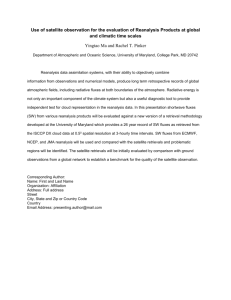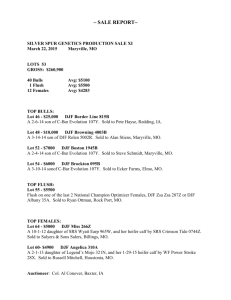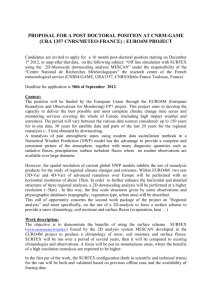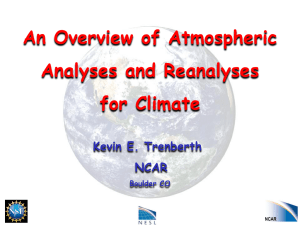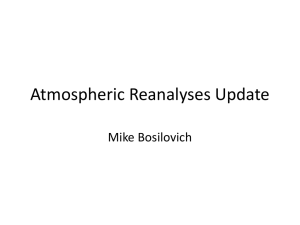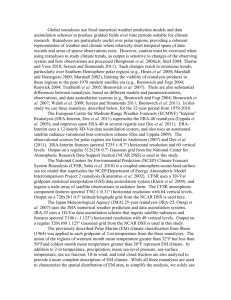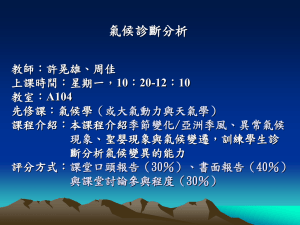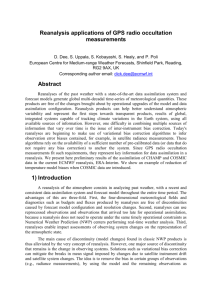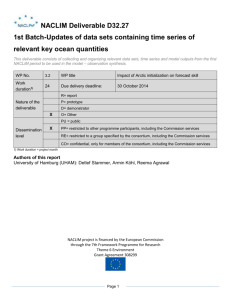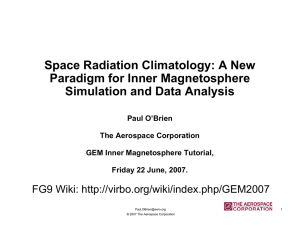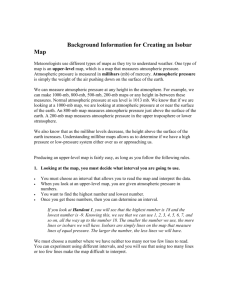grl52727-sup-0001-supplementary
advertisement
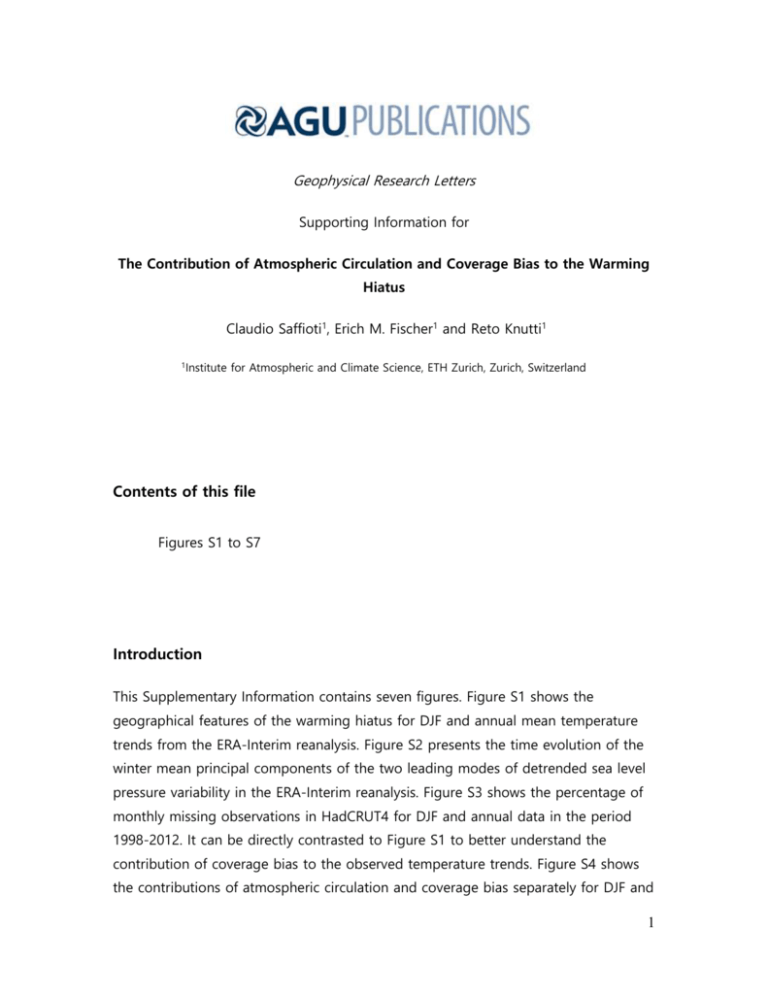
Geophysical Research Letters
Supporting Information for
The Contribution of Atmospheric Circulation and Coverage Bias to the Warming
Hiatus
Claudio Saffioti1, Erich M. Fischer1 and Reto Knutti1
1Institute
for Atmospheric and Climate Science, ETH Zurich, Zurich, Switzerland
Contents of this file
Figures S1 to S7
Introduction
This Supplementary Information contains seven figures. Figure S1 shows the
geographical features of the warming hiatus for DJF and annual mean temperature
trends from the ERA-Interim reanalysis. Figure S2 presents the time evolution of the
winter mean principal components of the two leading modes of detrended sea level
pressure variability in the ERA-Interim reanalysis. Figure S3 shows the percentage of
monthly missing observations in HadCRUT4 for DJF and annual data in the period
1998-2012. It can be directly contrasted to Figure S1 to better understand the
contribution of coverage bias to the observed temperature trends. Figure S4 shows
the contributions of atmospheric circulation and coverage bias separately for DJF and
1
annual mean temperature anomalies averaged over 20-90°N, 20-90°N land and the
global domain. Figure S5, S6 and S7 are presented to show that the conclusions
drawn from Figure 2 in the paper are robust and that they are not substantially
influenced by the choice of the reanalysis dataset and by the number of modes of
atmospheric circulation removed with dynamical adjustment.
2
Figure S1. DJF (left) and annual (right) mean temperature trends in the hiatus period
1998-2012 from ERA-Interim.
3
Figure S2. Winter mean principal components of the first (left) and second (right)
empirical orthogonal functions of detrended sea level pressure in the Northern
Hemispheric domain (20-90°N) from ERA-Interim. Blue lines indicate the trends of the
principal components computed in the periods 1980-1997 and 1998-2012.
4
Figure S3. Percentage of missing monthly observations in HadCRUT4 for DJF (left)
and annual (right) data in the period 1998-2012.
5
Figure S4. DJF and annual mean temperature anomalies averaged over 20-90°N, 2090°N land and the entire globe computed from original temperature data, and taking
into account the effects of coverage bias and atmospheric circulation, separately.
Temperature anomalies are estimated with respect to the period 1979-2008.
6
! " #$%1 2 #(' ) *+*,- . /. (3(
! " #$%! " &' (' ) *+*,- . /. (0(
45 &(4' &677(
! 2 &&(389: (" ) +9; <- (' ) *+*,- . /. (
Figure S5. Same as in Figure 2 in the paper, but with temperature trends computed
from NCEP/DOE Reanalysis 2, NCEP/NCAR Reanalysis 1, JMA JRA-55 and NOAA 20th
Century Reanalysis. The long-term trends indicated by the blue squares are
7
computed from the full-coverage unadjusted reanalysis in the period 1960-2012
(Reanalysis 1, JRA 55 and 20th Century Reanalysis) or 1980-2012 (Reanalysis 2).
Figure S6. Same as in Figure 2 in the paper, with dynamically-adjusted temperature
trends from ERA-Interim computed by removing the first 2 (top) and 6 (bottom)
modes of atmospheric circulation.
8
Figure S7. Winter mean temperature trends in the period 1998-2012 computed from
the unadjusted ERA-Interim data, and dynamically-adjusting for the first 2 and 6
empirical orthogonal functions.
9
